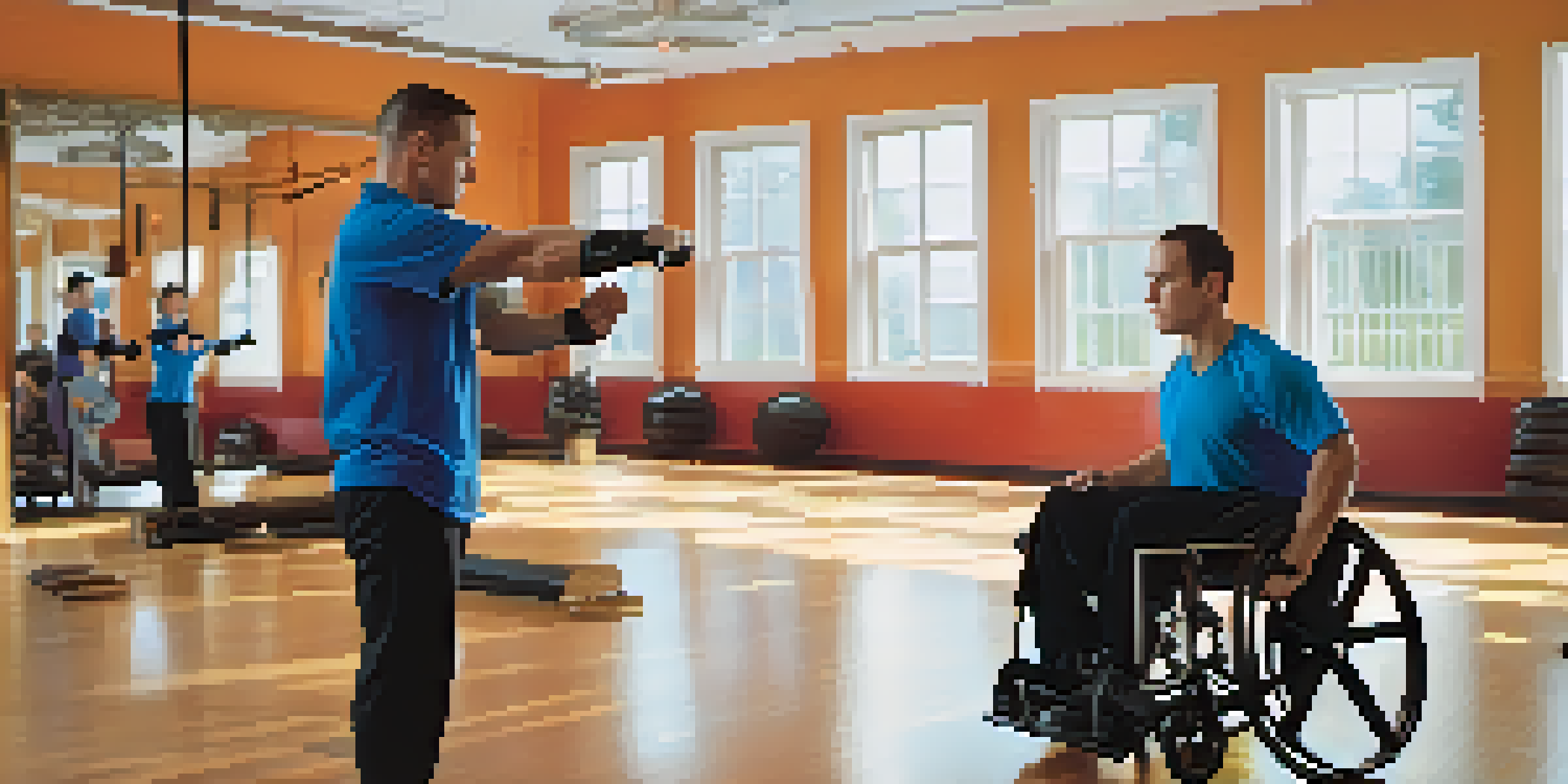Self Defense Techniques for Wheelchair Users: Essential Tips

Understanding the Importance of Self Defense
Self-defense is about empowerment and safety, regardless of physical ability. For wheelchair users, it becomes essential to know how to protect oneself in potentially dangerous situations. Awareness of your surroundings and understanding your rights can significantly enhance your security.
Self-defense is not just a skill; it's a way to reclaim your power and navigate the world with confidence.
Many people overlook the fact that self-defense isn’t solely about physical confrontation; it includes avoidance strategies and de-escalation techniques. Knowing how to read a situation and react accordingly can prevent conflicts before they escalate.
Moreover, learning self-defense boosts confidence and self-esteem. When you feel capable of handling unexpected situations, you navigate the world with greater assurance, which is invaluable.
Adapting Techniques for Wheelchair Users
Self-defense techniques can be adapted to suit wheelchair users, focusing on leverage and using the chair as a protective tool. For instance, if confronted, positioning your chair to block the attacker can provide a crucial moment to assess the situation or escape.

It’s also vital to practice techniques that utilize your upper body strength effectively. Simple movements, like quick turns or using arm movements to create space, can be incredibly helpful in warding off an aggressor.
Empowerment Through Self-Defense
Self-defense enhances personal safety and boosts confidence, empowering individuals to navigate potentially dangerous situations.
Additionally, training with a partner can help you refine these techniques. Practicing real-life scenarios makes you more prepared and comfortable when it counts.
Using Your Environment to Your Advantage
Your surroundings can be a great asset in self-defense. Look for objects that can create barriers or serve as shields, such as walls, benches, or even your own wheelchair. Positioning yourself strategically can make a significant difference.
The best defense is not a good offense. It’s knowing how to avoid conflict and protect yourself when necessary.
Consider also using your voice as a tool. Yelling for help or making noise can attract attention and deter an attacker, as most prefer to avoid drawing attention to their actions.
Creating distance from a potential threat is also key. If you can maneuver your wheelchair to increase the space between you and the aggressor, it may give you the time you need to escape.
Effective Communication Techniques
Communication is a powerful tool in self-defense. Being assertive and clear can prevent misunderstandings and de-escalate tense situations. Practice using a firm voice to express your boundaries, which can deter potential threats.
Non-verbal communication is equally important. Your body language can convey confidence and assertiveness, making you seem less like a target. Maintain eye contact and adopt an open posture to project strength.
Adapting Techniques for All
Self-defense techniques can be tailored for wheelchair users, utilizing leverage and the wheelchair itself as protective tools.
If the situation escalates, don’t hesitate to call for help. Having a plan for how to communicate in emergencies can empower you and those around you.
Finding the Right Self-Defense Class
Look for self-defense classes specifically designed for wheelchair users or adaptive techniques. These classes cater to your unique needs and teach strategies that are practical and effective. Research local community centers or organizations that offer such programs.
Consider the instructor's experience with adaptive techniques. A knowledgeable teacher can provide insights and customized advice that align with your abilities and comfort level.
Additionally, joining a class can foster a sense of community. Connecting with others who share your experiences can enhance your learning and provide mutual support.
Legal Considerations in Self Defense
Understanding the legal aspects of self-defense is crucial. Laws vary by location, so it’s important to familiarize yourself with what is permissible in your area. Generally, self-defense must be proportional to the threat you face.
Keep in mind that using your wheelchair in defense may be viewed differently under the law than traditional self-defense techniques. Knowing your rights helps you navigate any legal issues that may arise.
Legal Knowledge is Essential
Understanding the legal aspects of self-defense ensures you know your rights and can act confidently in critical situations.
It’s advisable to consult local resources or legal professionals to gain clarity on these matters. Being informed can empower you to act confidently in critical situations.
Practicing Self-Defense Regularly
Like any skill, self-defense techniques require regular practice to remain effective. Set aside time each week to review what you've learned and try out new techniques. Consistency helps reinforce your skills and build muscle memory.
Incorporating self-defense practice into your routine can also be a fun way to stay active. You can invite friends or family to join you, making it a social event while enhancing your safety.

Remember that the goal is not just to learn how to defend yourself but to create an ongoing habit of awareness and preparedness. This mindset will serve you well in everyday situations.